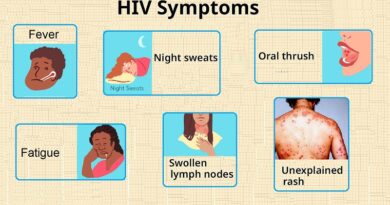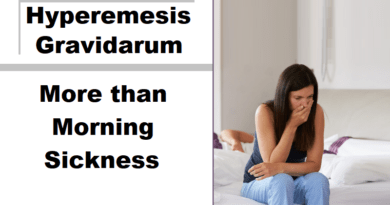Health Risks of Typhoons in The Philippines: How to Stay Safe
Typhoons like Uwan (Fung-Wong) bring not only flooding and property damage but also serious health risks. Uwan will start tomorrow, Sunday, as per PAGASA news. Its risks can affect families, especially older adults, children, and people with chronic conditions as diabetes or hypertension.
Every year, the Philippines faces several typhoons that bring heavy rains, strong winds, and flooding. The damage to property is often visible. The health risks of typhoons are just as dangerous. Sometimes, these risks are even life-threatening.
From waterborne diseases to mental stress, typhoons affect our physical and emotional well-being in many ways. Understanding these risks and knowing how to protect yourself can save lives — including your own.
Let’s take a closer look at the most common health risks during and after typhoons. Learn what you can do to stay healthy and safe.
🌧️ 1. Waterborne Diseases
After heavy rainfall and flooding, contaminated water becomes a major source of infection. Bacteria and viruses from animal urine, sewage, and garbage mix with floodwater — creating the perfect environment for diseases like:
- Leptospirosis – spread through contact with water contaminated by rat urine.
- Cholera and typhoid fever – caused by bacteria in unsafe drinking water.
- Hepatitis A – spread through contaminated food or water.
How to Stay Safe:
- Avoid walking or wading in floodwater whenever possible.
- If unavoidable, wear rubber boots and wash your legs and feet thoroughly afterward with soap and clean water.
- Boil drinking water for at least 2 minutes or use purification tablets.
- Discard food that has come into contact with floodwater.
- Wash your hands before eating or preparing food.
👉 Learn more about flood-related health risks at the World Health Organization’s flood safety page.
🦟 2. Mosquito-Borne Diseases
After the rain comes stagnant water — a perfect breeding ground for mosquitoes. Diseases like dengue fever, chikungunya, and malaria often rise sharply after storms.
How to Stay Safe:
- Remove standing water from containers, flower pots, and gutters.
- Use mosquito repellents or mosquito coils.
- Wear long-sleeved shirts and pants, especially in the evening.
- Sleep under mosquito nets or in screened rooms.
- Support community clean-up drives to destroy breeding sites.
If you develop fever, headache, or joint pain within a week after a storm, seek medical care immediately.
🤧 3. Respiratory Infections
Cold and damp conditions, especially in crowded evacuation centers, make it easier for viruses and bacteria to spread. Common colds, flu, and pneumonia are common after typhoons. For people with asthma or chronic lung disease, humidity and mold can trigger attacks.
How to Stay Safe:
- Wear a face mask in crowded or dusty areas.
- Keep your immunizations up to date, especially flu and pneumonia vaccines.
- Keep indoor spaces dry and well-ventilated to prevent mold growth.
- Get enough rest, drink warm fluids, and avoid staying wet or cold for long periods.
For reliable updates on flu prevention, visit the Department of Health (DOH) website.
🍱 4. Food Poisoning and Nutrition Problems
During disasters, food supply and refrigeration can be interrupted. Spoiled food or unsafe water can cause food poisoning, diarrhea, and stomach infections.
At the same time, limited access to healthy meals can lead to malnutrition. This is especially true among children and older people.
How to Stay Safe:
- Eat simple, non-perishable foods as canned sardines, dried fish, or boiled eggs.
- Always check expiration dates and avoid bloated or rusty cans.
- Wash fruits and vegetables thoroughly before eating.
- Diabetics should keep sugar-free snacks and medications ready.
🧠 5. Mental Health and Stress
Disasters affect not only the body but also the mind. The fear, uncertainty, and loss that come with a typhoon can lead to anxiety, insomnia, or depression. Some people may even develop post-traumatic stress disorder (PTSD) after severe storms.
How to Stay Safe:
- Stay informed but avoid constant exposure to alarming news.
- Stay connected with family and friends — sharing your feelings helps reduce stress.
- Do light exercise, breathing exercises, or prayer to calm your mind.
- Get professional help if anxiety, sadness, or insomnia persist.
Remember, mental health care is part of disaster preparedness. Healing your mind is just as important as protecting your body.
⚡ 6. Injuries and Electrical Hazards
Cleanup after a storm can be dangerous. Many injuries occur due to electrocution, falls, or sharp debris hidden under murky water.
How to Stay Safe:
- Turn off electricity before entering a flooded area.
- Avoid touching electrical wires or outlets when standing in water.
- Wear rubber gloves and boots during cleanup.
- Use a flashlight instead of candles to prevent fires.
If you experience cuts or wounds, wash them immediately and apply antiseptic. See a doctor if the wound becomes swollen or painful — it can become infected.
💊 7. Interrupted Medical Care
For people with chronic illnesses as diabetes, hypertension, or asthma, a typhoon can disrupt access to medication. It can also affect check-ups or equipment like glucometers and nebulizers.
How to Stay Safe:
- Prepare an emergency medical kit with at least two weeks of your essential medicines.
- Include a list of your current prescriptions and your doctor’s contact number.
- Store medications in waterproof containers or sealed plastic bags.
- Keep extra batteries for your glucose meter or other devices.
For up-to-date disaster health guidance, check PAGASA and DOH advisories.
❤️ Final Thoughts: Staying Healthy After the Storm
Typhoons remind us that preparedness is not only about survival. It’s also about staying healthy when everything else is uncertain.
By understanding the health risks of a typhoon, you can take preventive steps. This will protect you and your family from many post-disaster illnesses.
Here’s a quick summary:
✅ Avoid floodwater and drink only clean water.
✅ Eliminate mosquito breeding sites.
✅ Maintain hygiene and proper nutrition.
✅ Protect your mental health.
✅ Keep a medical kit ready for emergencies.
When a typhoon passes, life may take time to return to normal — but your health doesn’t have to suffer. Stay alert, stay safe, and take care of one another.
External Links
- World Health Organization – Floods and Health Risks
- Philippine Department of Health – Disaster Preparedness
- PAGASA – Official Weather Advisories




